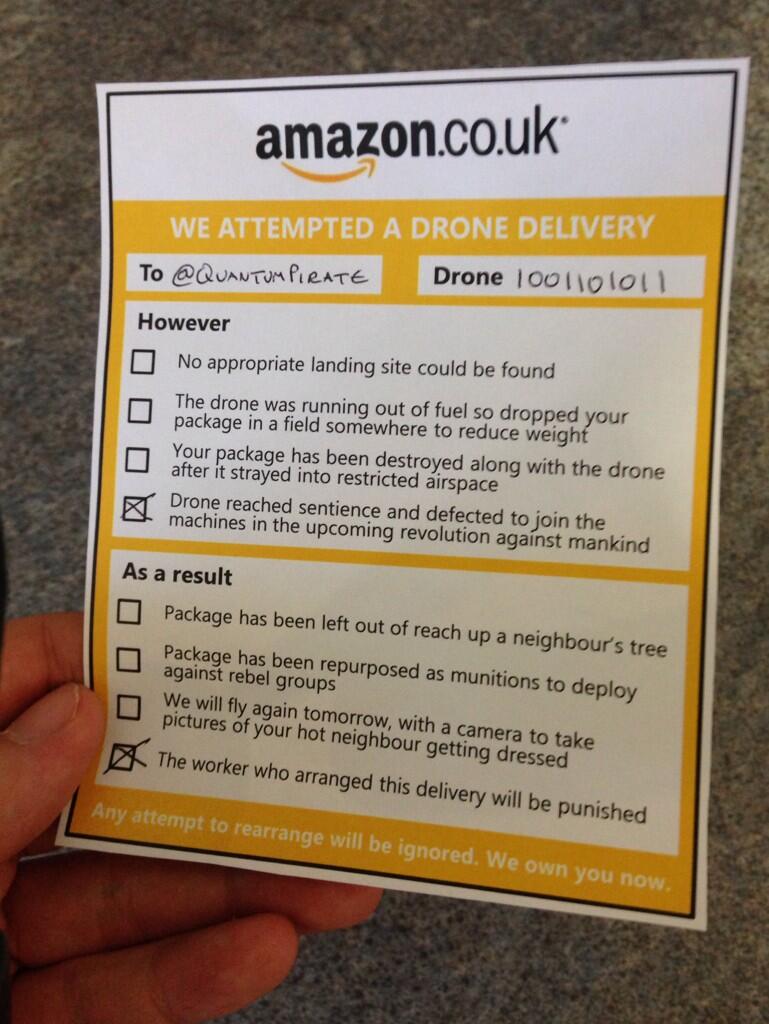
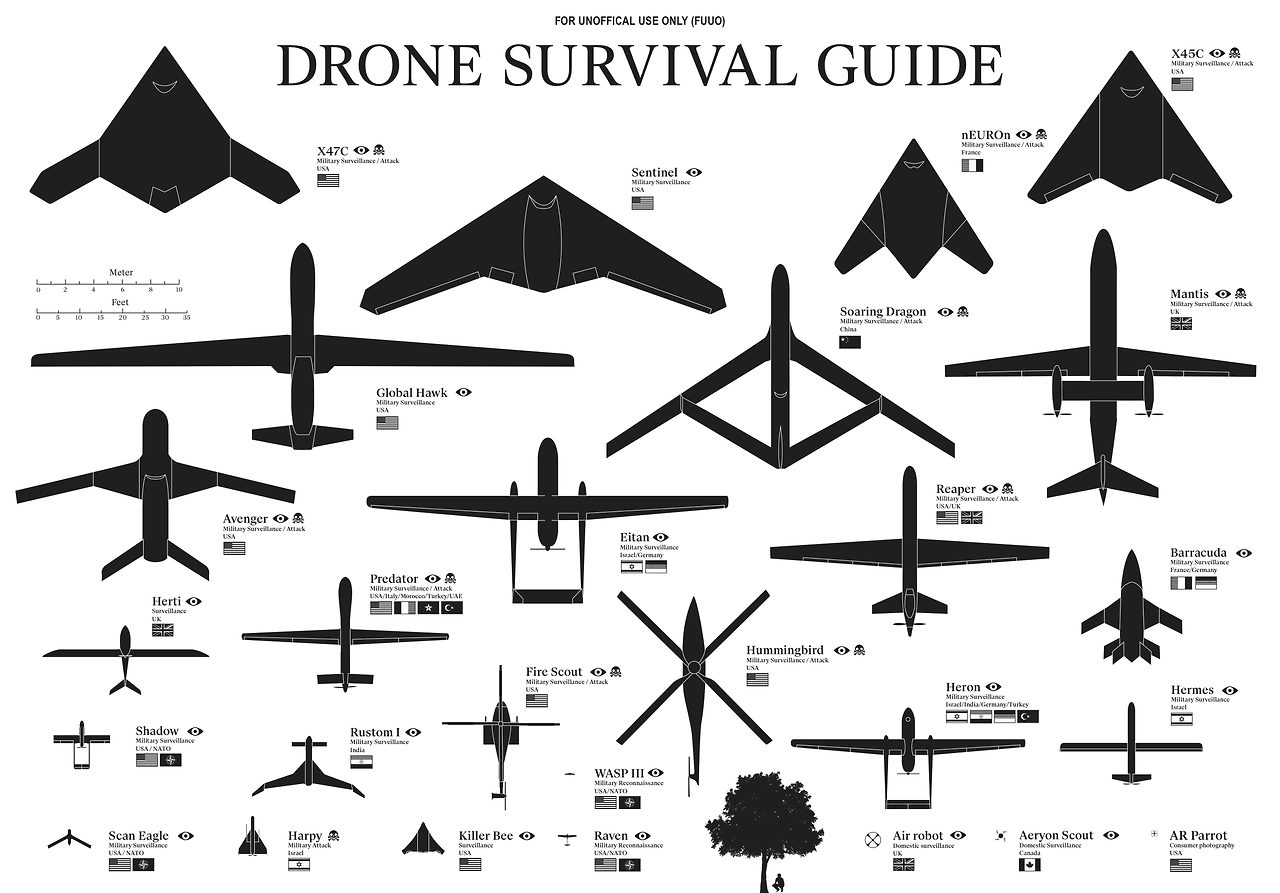
via BruceS

“Future Imperfect”
9 November 2013
Tate Modern (Starr Auditorium)
www.ibraaz.org
Download the art-agenda iPad App Share
Timetable and speakers for Future Imperfect: Cultural Propositions and Global Perspectives.
“The idea of the future, pregnant with an infinity of possibilities, is more fruitful than the future itself, and this is why we find more charm in hope than in possession, in dreams than in reality.”
–Henri Bergson
What can speculations on the future tell us about the priorities of the present and the demands of past?
Future Imperfect brings together an international line-up of artists, writers and cultural practitioners to consider ways in which artistic practices can help inform and shape collective futures. Through performances, interviews, panel discussions, and a screening programme, contributors will highlight how present histories and institutions are being shaped through propositional speculations on the future.
This symposium is organized by Ibraaz, and supported by the Kamel Lazaar Foundation in partnership with Tate Modern.
For tickets and further details, please visit this website.
Schedule
10.30–12.30h: Propositional Futures
Living in the shadow of an apparently unending ‘war on terror,’ the far from resolved global financial crisis, ongoing uprisings across North Africa and the Middle East, and ubiquitous systems of connectivity and surveillance, it would seem that the future—constricted by the all too immediate challenges of the present—is not what it used to be. This panel will explore what is at stake in articulating propositions on the future and question why the future is not what it used to be.
13.30–15.15h: 1967/1968: What Was Lost?
The events of 1967 still resonate across the Middle East and beyond. In June of that year, the so-called Six Day War, or an-Naksah (The Setback), heralded an end to a number of things: the nationalist ideal of Pan-Arabism, the political will towards more open societies, economic growth, and the nascent cultural dispositions that marked the 1960s. One year later, in 1968, a revolutionary politics emerged in struggles against dictatorships, state repression, and colonization, across the United States, France, Mexico, Brazil, Northern Ireland, Czechoslovakia, Yugoslavia, Spain, and Germany. This panel will revolve around a singular question: what was lost in the idealism associated with the period of Pan-Arabism and the radical politics of 1968? And what do those losses tell us about the apparent social, political and cultural impasse that marks the present and the future?
15.30–17.30h: Structural Futures: Where to Now?
The future, as Louis Althusser once observed, tends to last a long time. The possibilities associated with it often remain unrealized and this can be, under the compromised conditions of modernity, a conceptual necessity: the future must always remain in the future. However, for possibility to become potential and be realized over time, both within cultural practices and institutional contexts, infrastructure needs to be in place. This panel will discuss what a future arts infrastructure might look like across the Maghreb region, to begin with, and how the role of artists and institutions could change in a global context.
Photos from “Out of Control? Living in a Surveilled World” at the Museum für Kommunikation, Frankfurt
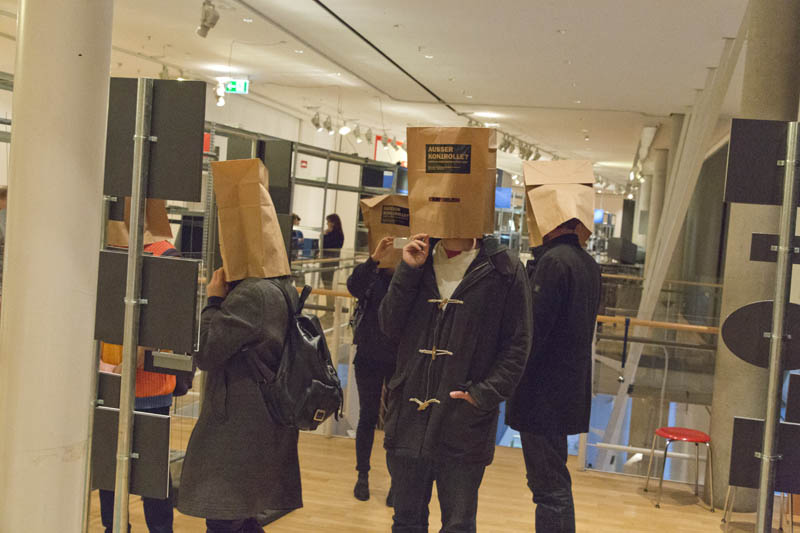
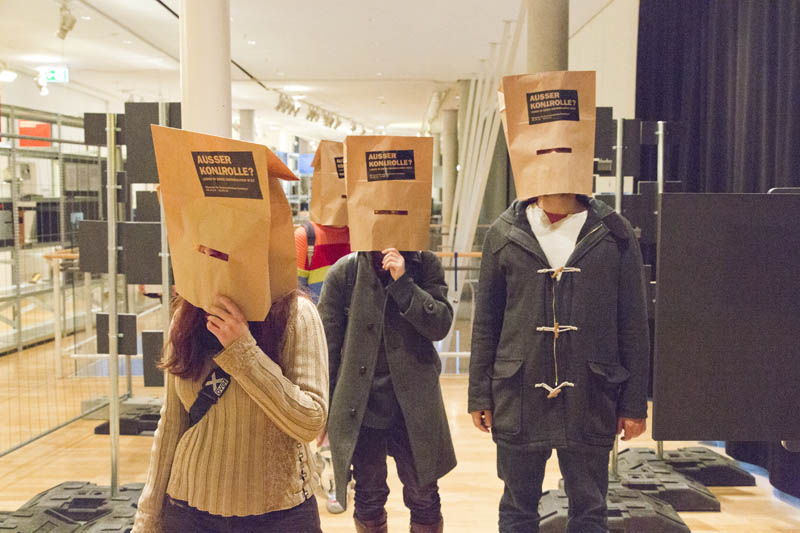
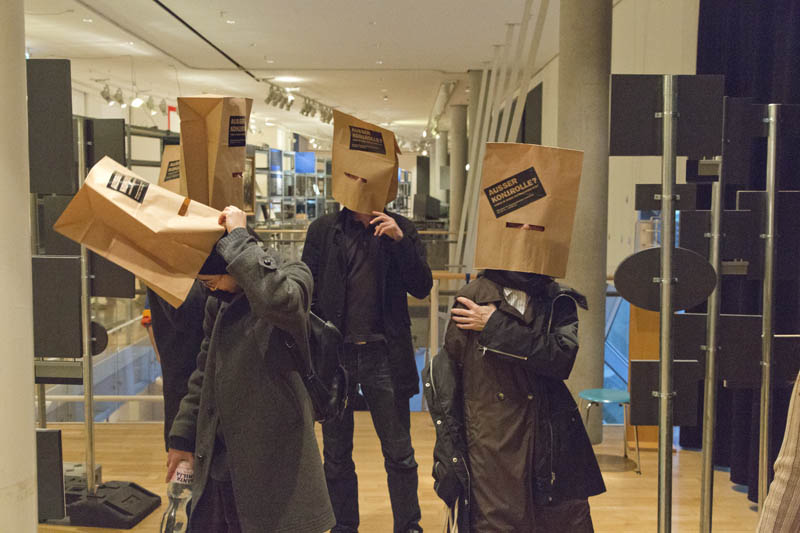
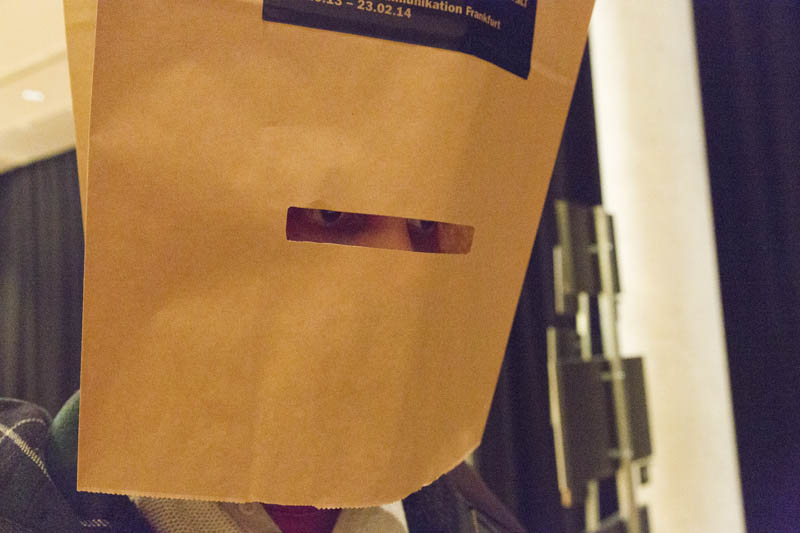
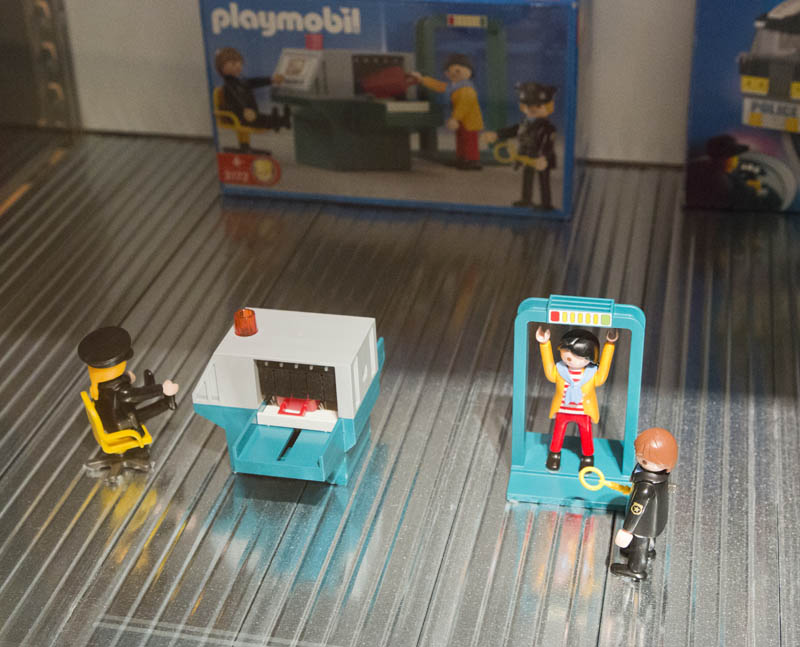
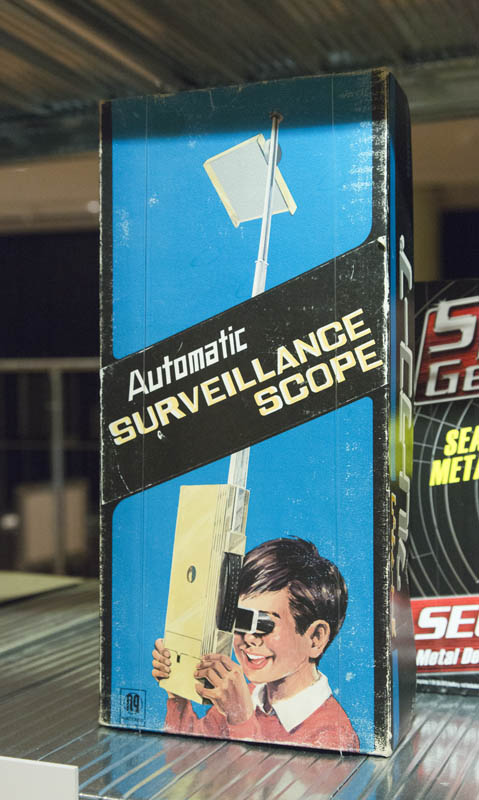
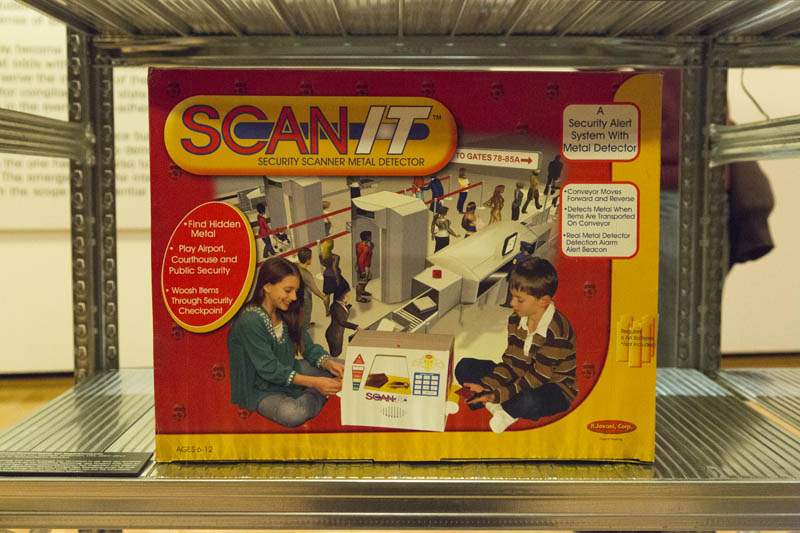
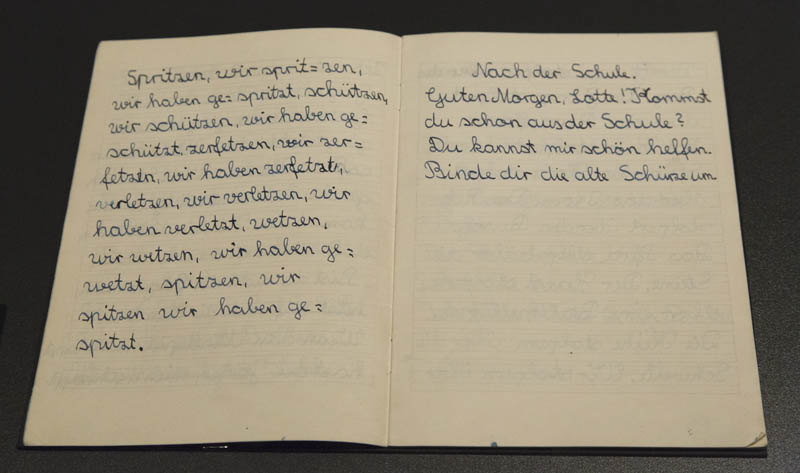
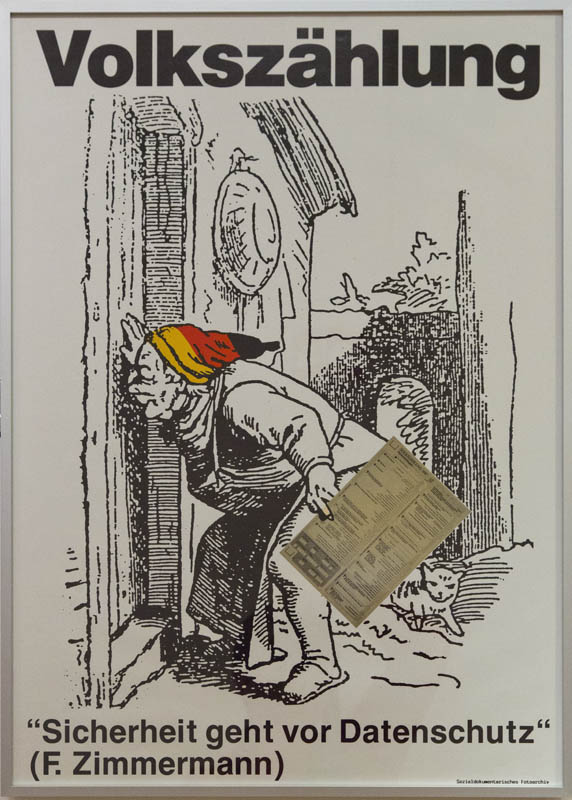
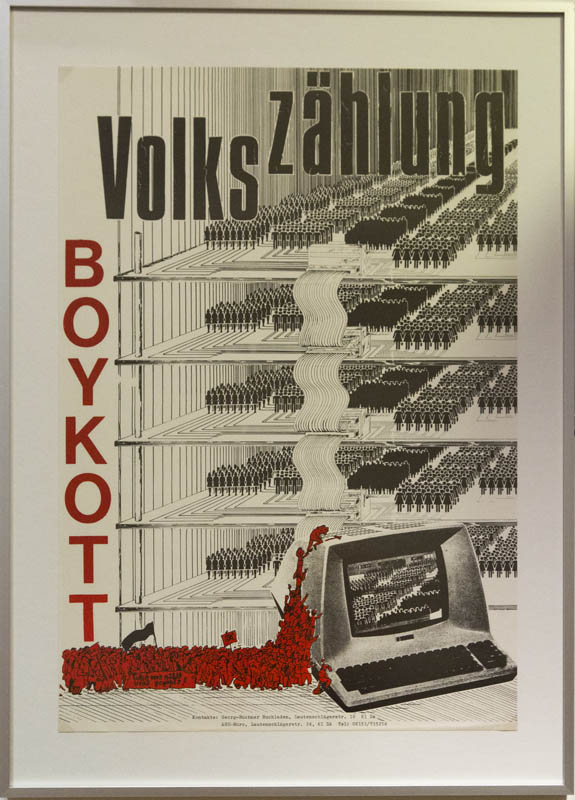
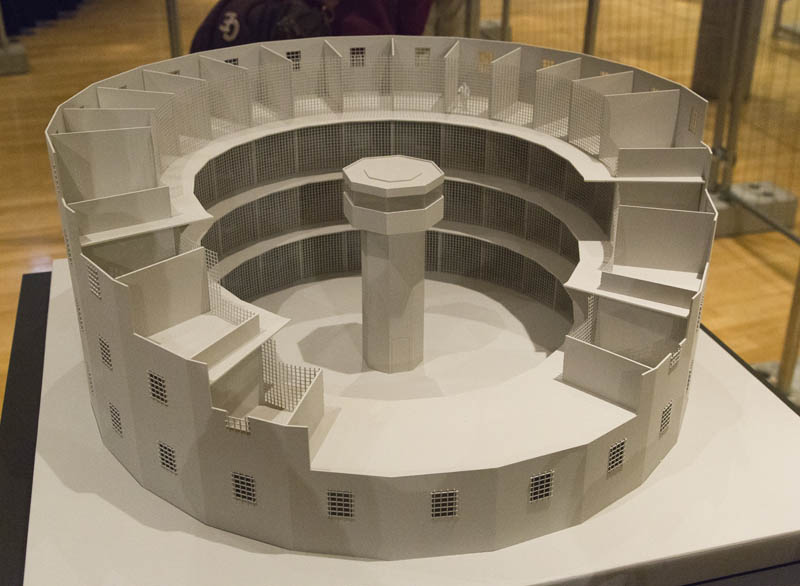
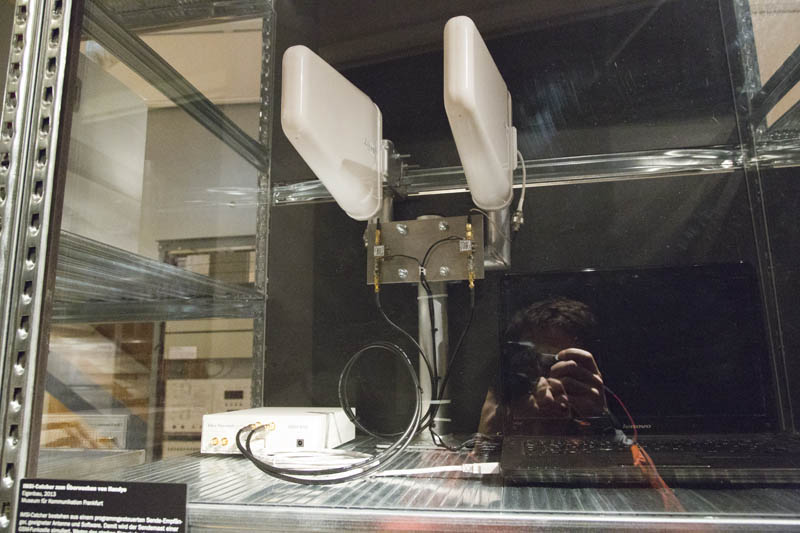
Just a thought, regarding the representative function of portraits. The change is especially visible in ruler’s portraits. Take e.g. the Doge of Venice by Bellini, 1501:
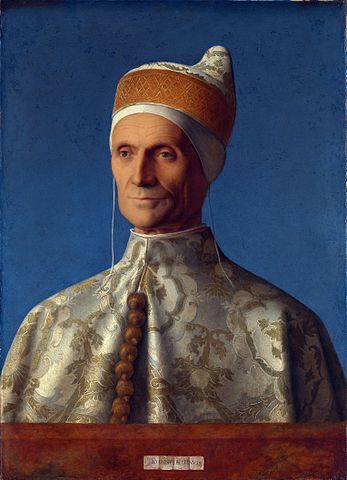
Presumably as with other portraits of this kind, copies were put up in official buildings all around the country. So that the Doge would always be present. This way, one person can be in many places at once. And exercise authority.
Nowadays this, too, has been democraticized. With the automatic synchronization of biometric face databases, we’re all everywhere, anytime. Except that the power relations have changed, too. It’s pictures of those that need to be controlled and disciplined, that are being exchanged.
Those pictures are normally not put up on a wall (except maybe when you’re on the most wanted list). So what is it that happens exactly, when no human is looking at those portraits, but algorithms. What is being done to the representation of you?
says the line under these posters.
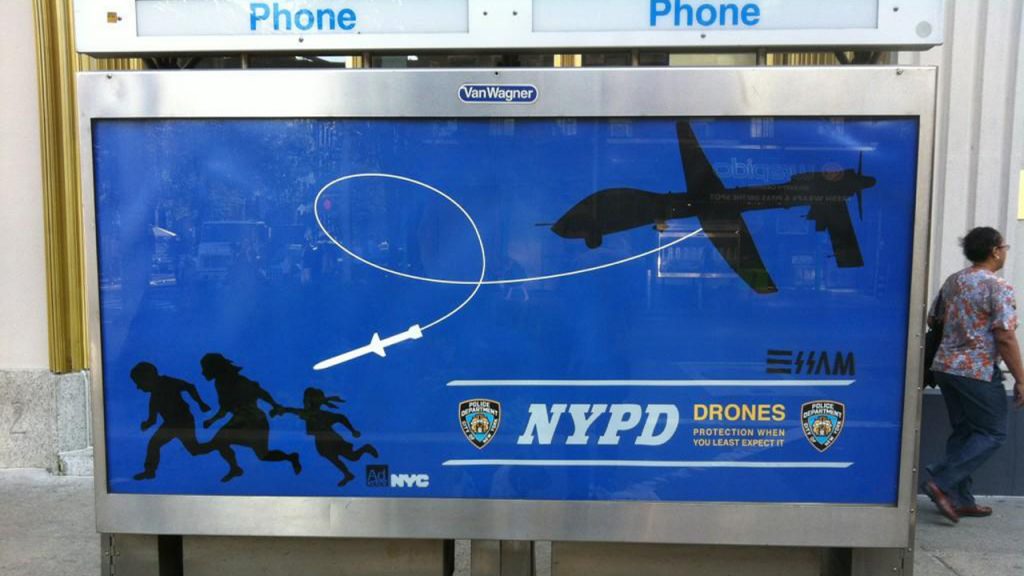
I really, really like that swirl. Sadly, the artist was tracked down and now faces terrorism charges, or something.
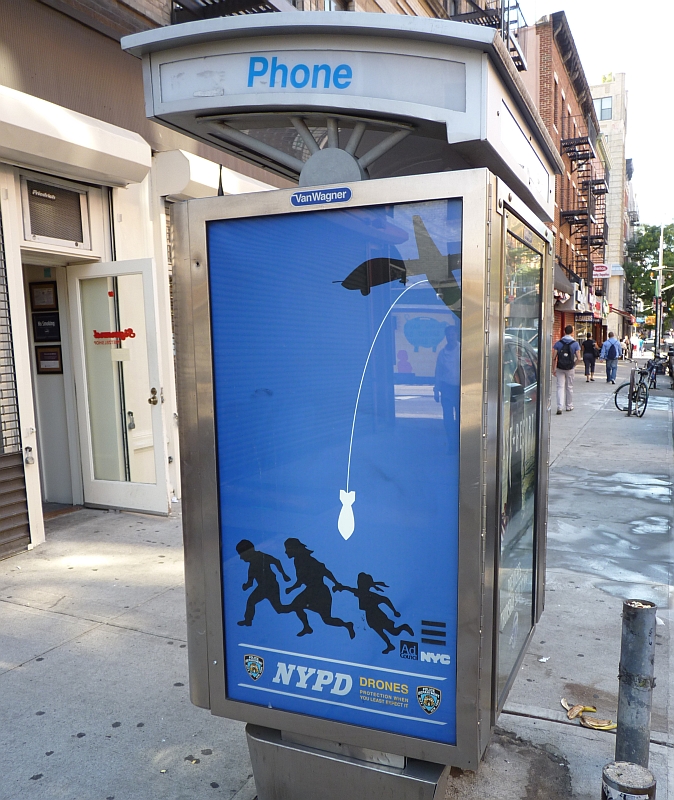
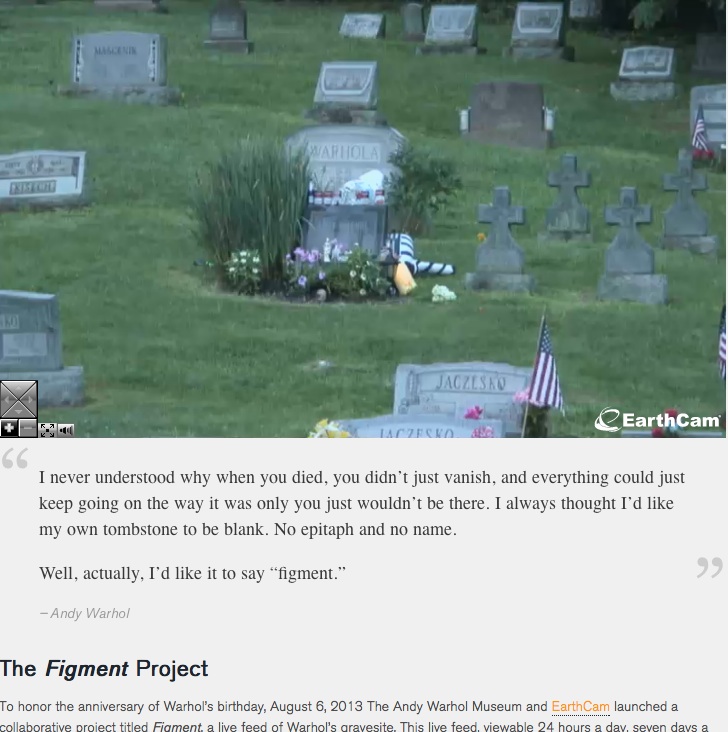
24/7, catch it while it’s on! A live feed to celebrate Andy’s 85th birthday. http://www.warhol.org/figment/
“…our inability to describe and understand technological infrastructure reduces our critical reach, leaving us both disempowered and, quite often, vulnerable.”
James Bridle
“Again it comes back to infrastructure and how our inability to describe and understand reduces our critical reach, leaving us both disempowered and, quite often, vulnerable.
Opacity is an important word here too, as is the term ‘black box’. Most of our engineered communications infrastructure is not just extraordinarily abstract for people to come to grips with but is actively kept hidden. There are some valid reasons, of course, for keeping infrastructure hidden but the fact is it out of sight is being increasingly exploited in and out of supposedly democratic contexts, largely by surveillance initiatives we were never told about.
Engendering a healthy paranoia here, along with making work that ruptures the featureless skin of these black boxes – providing points of entry – is important to me currently. Infrastructure must not be a ghost. Nor should we have only mythic imagination at our disposal in attempts to describe it. ‘The Cloud’ is a good example of a dangerous simplification at work, akin to a children’s book. Such convenient reductions will be expensive in time as some corporations and governments continue to both engineer – and take advantage of – ignorance.”